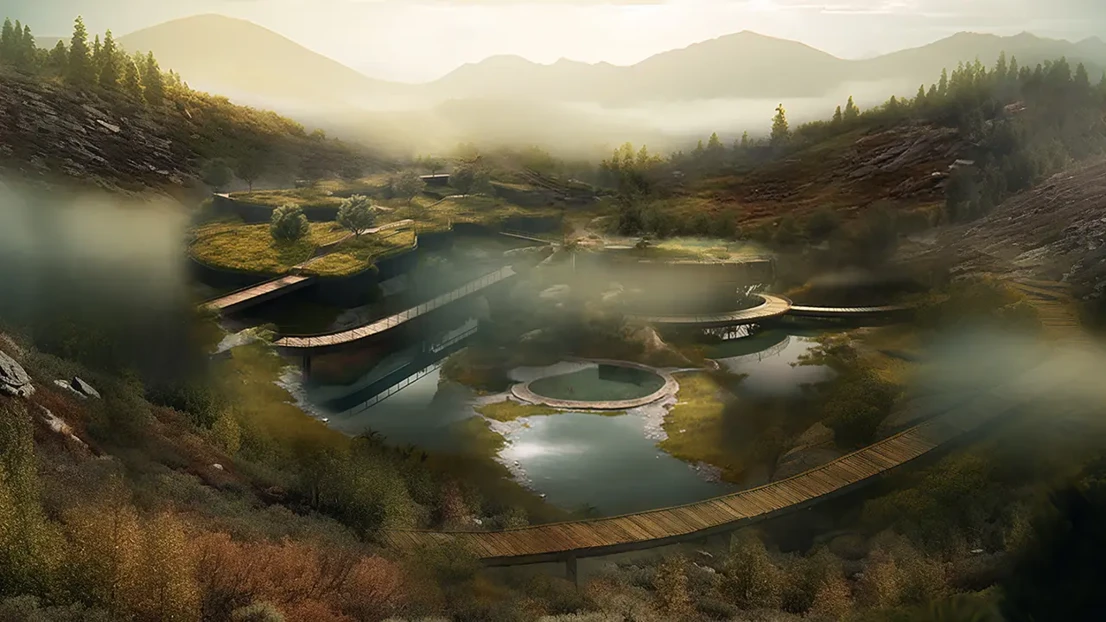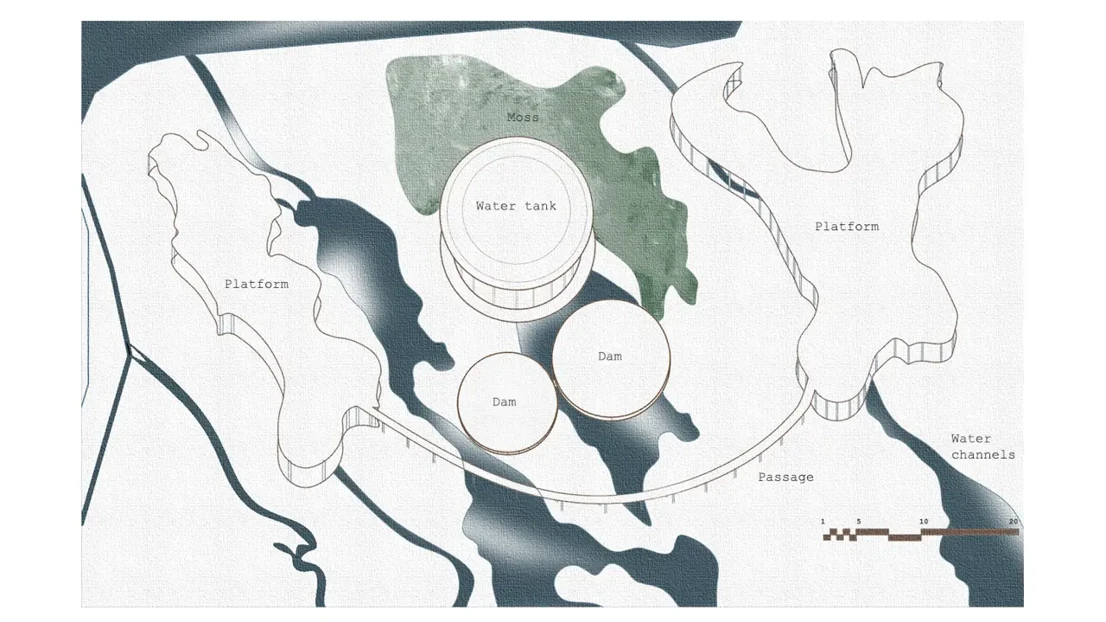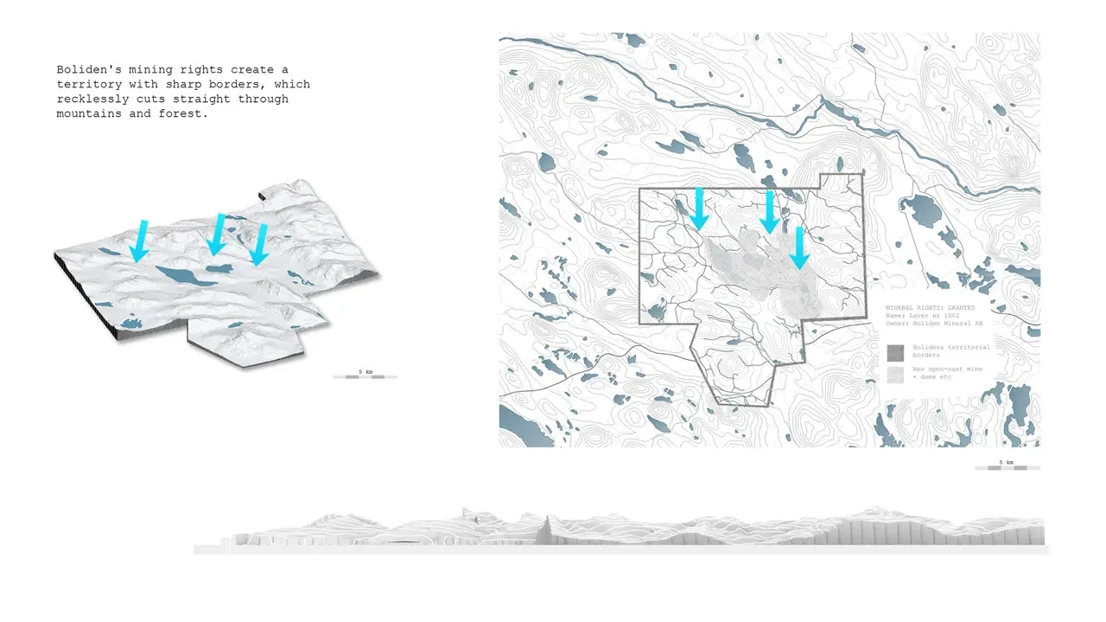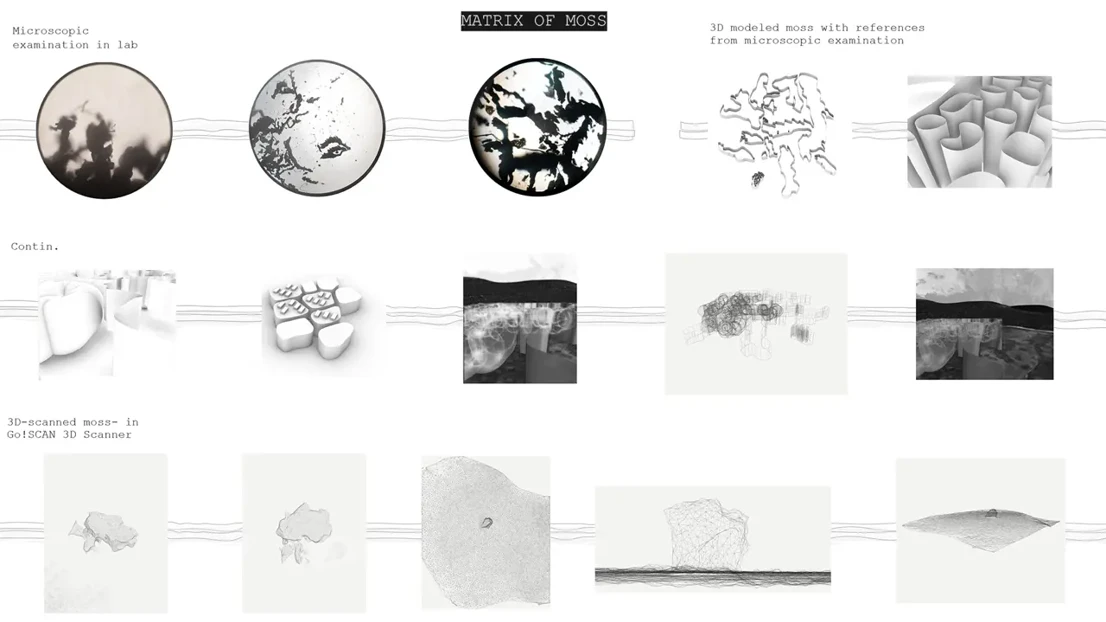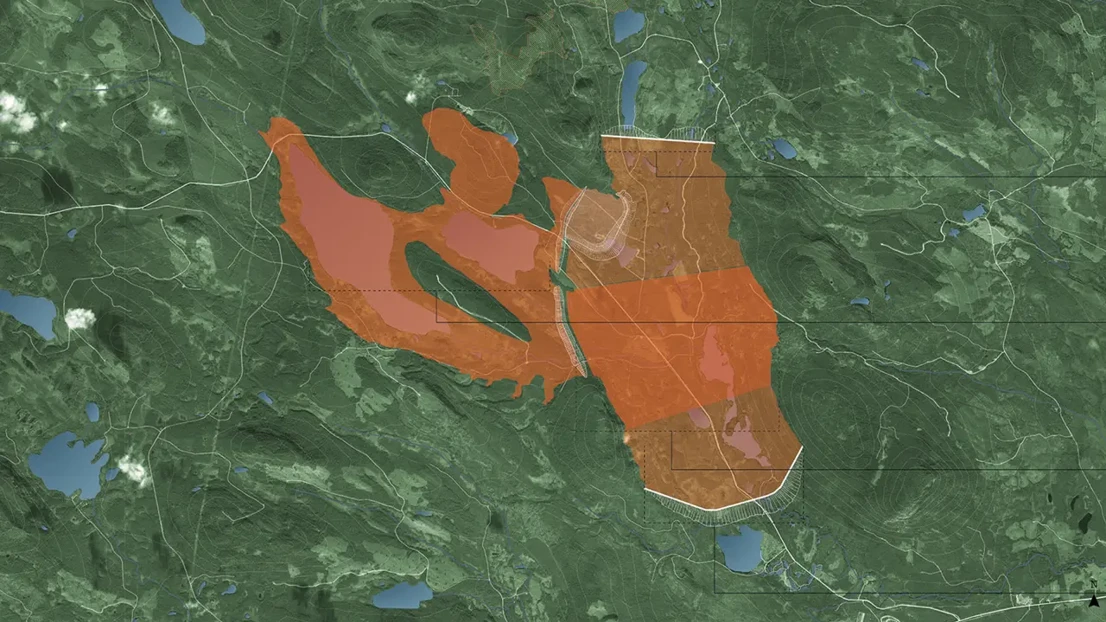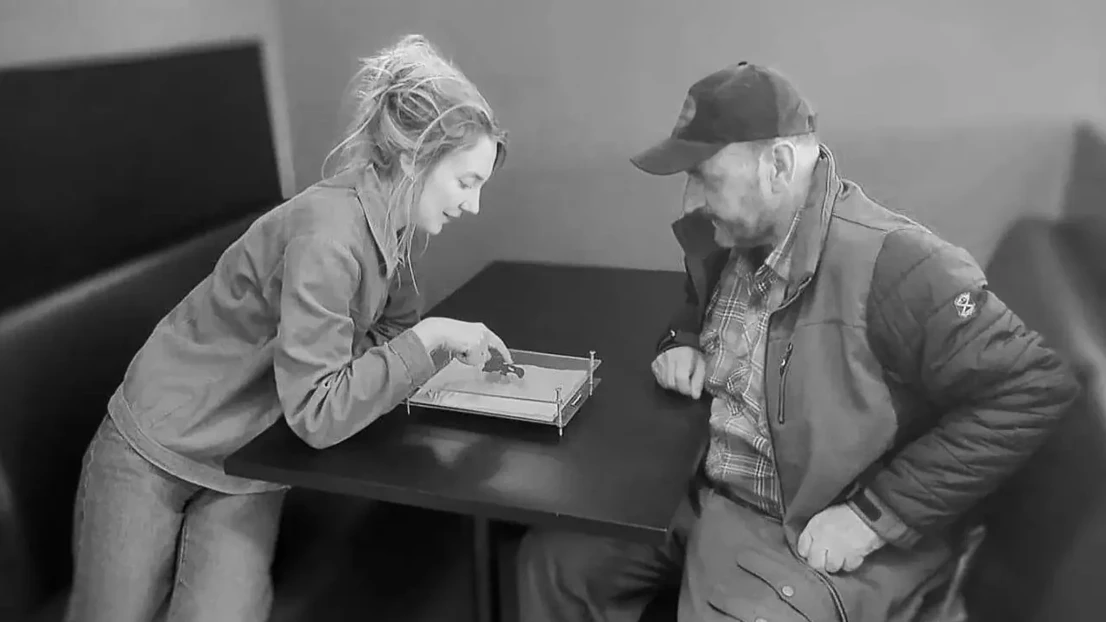An alternative future for a polluted clearing dam with biodegradable platforms that nourish the soil long-term, limestone plinths to accelerate the remediation process, water channels created through moraine dirt walls to accelerate moss growth. Rainwater is collected and released into channels.
WILL LAVER LIVE?
It started with ruins. Black and white pictures of bare foundations, exposed columns and signs leading nowhere. Fascinated by nature's resilience and its ability to reclaim lost territory, I stumbled upon the remains of the mining village Laver, located in Älvsbyn’s municipality, Norrbotten. An once prospering society, now shrouded into mystery. The project led me on a journey questioning and expanding the architect's role and prompted an exploration of nature's resilience as well as that of humans and structures.
The thesis explores the transformative potential of architects in addressing the artificial scars left by former industries on post-infrastructural sites. It investigates how architects can apply their knowledge and how the conventional role of the architect might transform, when collaborating with an oppositional interest group. In addition, it examines how this same expertise can collaborate interdisciplinary, to develop a future remediation scenario for an old, polluted mining site.
The research methodology is iterative, allowing for adjustments based on project dynamics. Through qualitative research, including site visits and collaboration with the Miljögruppen Pite-Älvdal (MPÄ) resistance group, the study integrates architecture and ecology. Interdisciplinary discussions with biologists and ecologists shape a vision for Laver's future, enhancing credibility and provide valuable insights.
The findings highlight the evolving role of architects as active participants in interest groups and facilitators of interdisciplinary research. The thesis argues for transcending the traditional architect's role, recognizing their interconnectedness with ecological, global, and social networks. The MPÄ group undergoes a perceptual shift after witnessing the potential of visualization and architectural tools, emphasizing architects' influence in shaping perceptions and driving transformative change.
Will Laver live? In one way or another, Laver will continue to exist. However, in future interference in the area, it is important to recognize that the time aspect of architectural inventions, will extend beyond their initial intended conception. It will eventually all end in ruins, but it is up to us how these ruins well treat the nature. By broadening architects' perspectives and promoting interdisciplinary work, we can pursue innovative approaches for a sustainable future.
Studio 12: Man-Made Geographies: From Planetary to Molecular
Studio Teachers: Alejandro Haiek Coll (Studio Coordinator), Johanna Runge, Raffaelle Enrichiello
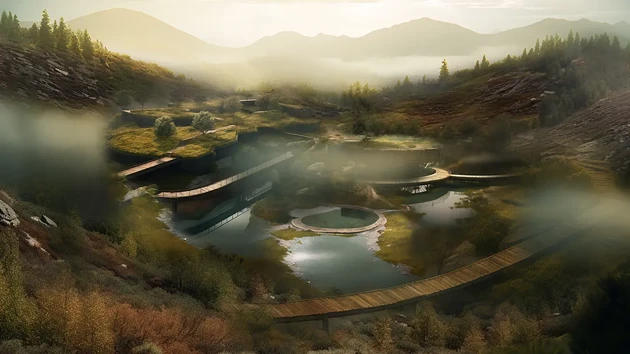
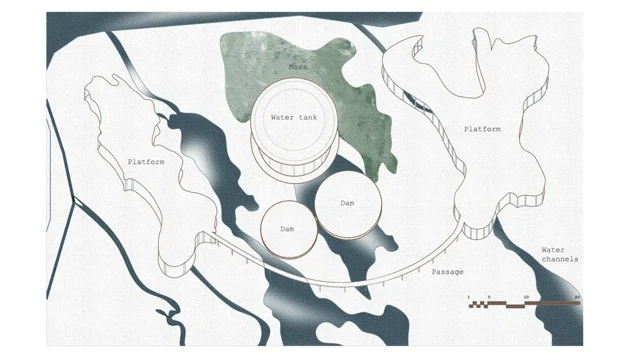
Output drafted as a result of research and interdisciplinary discussions with an expert in ecology.
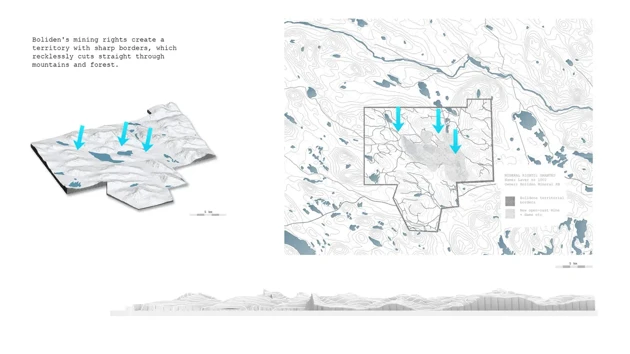
Illustrating the mining company Boliden’s mineral rights in the Laver-area. (Based on data from SGU and the Swedish Mining Inspectorate, 2022)
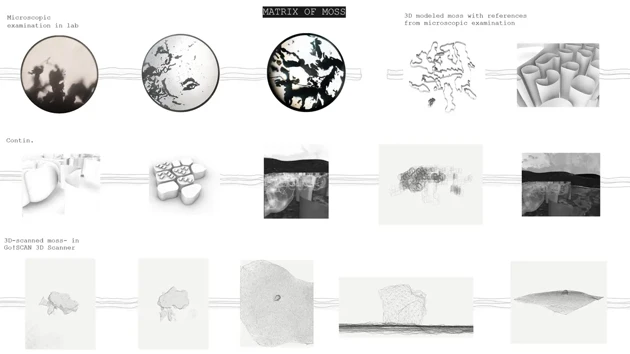
Matrix of moss. Exploring through research informing the design. First in laboratory, later through sketches, 3D-scannings and 3D-modells.
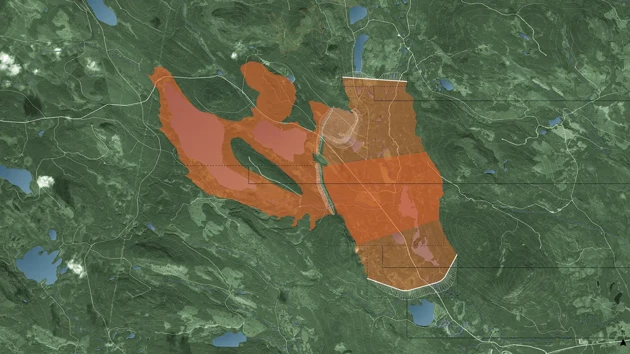
A map showing the territory where the mine and dams will be positioned. This was map with improved readability was design for the intrest group Miljögruppen Pite-Älvdal, to be used in their work to inform the public about the upcoming mining plans.
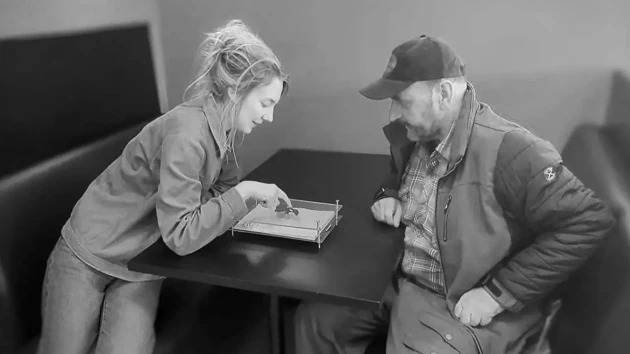
Ulf Johansson and I, Fredrika Stelander, during the last meeting, when showing a model representing threatened area in Laver.
